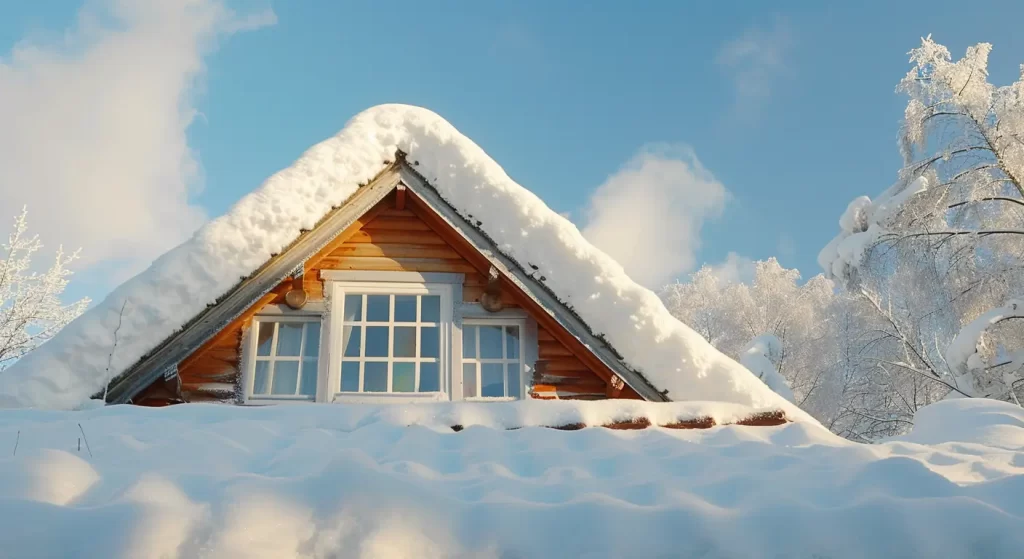Worried about how much snow your roof can actually handle? Even in San Antonio, TX, unusual winter storms are becoming more common. With the right knowledge, you can enjoy true peace of mind, knowing your home is safe under inches of snow. At Shield Roofing, we use decades of experience to keep your roof strong—rain or shine. Let us help you understand your roof’s limits and keep it performing at its best, even in unexpected weather.
Why Snow Load Matters for San Antonio Roofs
Snow load is a crucial factor for San Antonio, TX homeowners, despite the area’s infrequent heavy snowfall. Knowing your roof’s snow load capacity prevents structural issues like collapse from excessive weight. Fresh snow typically weighs about 7 lbs per cubic foot, but moisture can increase its density.
Regular maintenance is essential for protecting your home. Homeowners should recognize how unusual snow events can affect roofing systems. Well-designed roofs with suitable pitch and drainage enhance resilience against unexpected winter roof loads, keeping your roof secure.
The Basics of Snow Weight and Roof Safety
Understanding the impact of accumulated frozen buildup on your roof is essential for safety and structural integrity. Each square foot can support a specific weight, with fresh snow density affecting your roof’s load capacity. In areas with heavy snowfall, monitoring winter buildup is crucial to prevent roof collapse.
Regular maintenance, including frozen buildup removal with tools like a roof rake or snow shovel, helps manage this weight. Being proactive and considering local building codes and your roof’s pitch will ensure peace of mind during winter’s unpredictable weather.

How Unusual Snow Events Impact Texas Homes
Unusual snowfall can catch Texas homeowners off guard. Heavy, lingering snow may exceed local roof load limits, leading to leaks or severe ice dams that cause interior moisture damage.
Many San Antonio, TX roofs are designed for warm weather and are susceptible during unexpected storms. Ice dams form when melting snow refreezes, blocking drainage and forcing water under shingles.
Factors Affecting Roof Snow Load Capacity
Snow load capacity isn’t just about how much snow falls—your roof’s construction, pitch, and insulation all matter. A structural engineer can help determine the safe limits for your home, but the type of snow and how it accumulates are equally important. Light, fluffy snow puts less stress on your roof than heavy, wet snowfall that settles and builds up.
Roof pitch also plays a pivotal role in snow removal and overall safety. As we look closer at these key factors, you’ll see why custom solutions are essential for every home.
Roof Design: Flat, Sloped & Key Features
Roof design significantly impacts winter load capacity. Flat roofs, common in modern architecture, tend to accumulate more frozen precipitation due to their minimal pitch, necessitating proactive removal to avoid structural damage or collapse. In contrast, sloped roofs effectively shed wintry buildup, enhancing safety.
Architectural features like overhangs and gables can affect accumulation, creating areas prone to moisture issues such as leaks or ice dams. Regular maintenance and thoughtful design can ensure peace of mind during periods of heavy winter weather.

Roofing Materials: Asphalt, Metal & More
Roofing material choice greatly affects snow load capacity. Asphalt shingles are affordable and easy to install, but may lack durability in heavy snowfall areas. Metal roofing, however, offers superior strength for greater winter roof loads and minimizes collapse risk due to its smooth surface, which facilitates snow removal.
Insulation and roof design also matter. Pitch and architectural features can distribute snow weight effectively or increase structural stress. Homeowners should consider these factors to ensure their roofs can manage winter roof loads while complying with local building codes for safety.
Influence of Building Codes and Local Climate Zones
Local climate zones are crucial in determining a roof’s winter load capacity. Building codes ensure structures can withstand area-specific environmental conditions. Regions prone to heavy frozen precipitation impose strict minimum roof load requirements, meaning homeowners must consider the maximum weight each winter, including factors like density and accumulation.
Environmental factors, such as temperature fluctuations, also influence snow characteristics. Ice dams may form during thawing, increasing moisture and leak risks. Regular maintenance, including snow removal, is vital for protecting roofing materials and ensuring peace of mind during heavy snowfall.
Calculating the Maximum Snow Load for Your Roof
Ready to figure out your roof’s limits? Calculating the maximum snow load is easier than you think. Start by measuring the amount and density of snow sitting on your roof—these are the two key factors for any calculator or estimate. Many online tools can help you convert inches of snow into pounds per square foot, but nothing replaces an expert inspection from Shield Roofing for total security.
Next, let’s walk through a simple, step-by-step process to estimate your roof’s snow load capacity—plus tips on using calculators and knowing when to call a pro.

How to Estimate Snow Load
To estimate the weight of frozen precipitation on your roof, start by identifying the type of accumulation: fresh buildup weighs about 7 lbs per cubic foot, while compacted layers can exceed 20 lbs. Measure your roof’s dimensions to find the total surface area in square feet, then determine the average depth of accumulation. Multiply the surface area by the weight per cubic foot to calculate the roof’s winter load capacity.
Regular maintenance is crucial. Inspect for snow accumulation and ensure drainage systems, like gutters, are functioning properly. This proactive approach helps homeowners assess their roofs’ capacity and reduces collapse risk.
Online Tools vs. Roofing Experts
Online tools help homeowners assess their roofs’ snow load capacity by allowing input of variables like pitch, snow type, and local codes. These resources quickly calculate safe winter buildup weights, providing peace of mind as winter approaches.
For heavy snowfall or structural concerns, consult a structural engineer. They can identify design weaknesses, such as moisture retention and ice dams, offering essential maintenance guidance.
While online calculators provide initial estimates, a structural engineer delivers tailored advice and greater assurance regarding your roof’s performance under winter roof loads.
Connect With Us
Understanding your roof’s snow load capacity is vital, especially in areas like San Antonio, TX that experience unpredictable weather. Consider design, materials, and local codes to assess your roof’s winter safety. Regular inspections maintain structural integrity and provide peace of mind. For assistance, contact Shield Roofing. With over 25 years of experience and partnerships with trusted brands like Owens Corning and GAF, we ensure your roof lasts. As an Owens Corning preferred contractor, GAF certified, and BBB A+ rated, we are dedicated to excellence. Reach out today for expert guidance!
Read our blog: Solar Reflective Roofing: Save on Cooling Costs
Frequently Asked Questions
How much weight can a roof take with snow?
Most modern roofs are designed to safely support about 20 pounds of snow per square foot, but this varies by design and age. Use a calculator to estimate the total pounds of snow on your roof and check against your roof’s maximum snow load for peace of mind.
What is the maximum snow load on a roof?
The maximum weight your roof can handle depends on the density of frozen precipitation, roof design, and local building codes. Typically, roofs are built to support 20–30 pounds per square foot, but heavy, wet buildup or ice can exceed this quickly. Always consider cubic foot measurements and code requirements to ensure safety.
